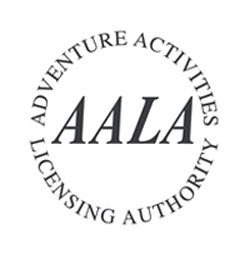Seas the Day: 5 Facts About the
Yorkshire Coast
Article by Millie Fuller
Think of Yorkshire and you’ll probably conjure up images of the rugged and wild moors, stretching out as far as the eye can see. But did you know that Yorkshire is also home to some of the most beautiful coastlines in the UK?
Running along the eastern coast of England, you’ll find fine sandy beaches, imposing craggy cliffs, and some choice surf! Here are a few fascinating facts about the Yorkshire Coast you may not have known.
1. The Length of the Yorkshire Coast isn’t Always the Same
Length is fixed, right? The measurement of an object doesn’t change… or does it?
The stunning Yorkshire Coast runs from Staithes to Bridlington. Depending on how you measure it, you can get different lengths and they can vary quite a bit! Following the line of the coast, you’ll get a length of around 42-45 miles (68-72km). Taking into account the varying heights of the cliffs as you walk along the coastline, the length comes in at 67 miles (107km). That’s quite a big difference!
Whatever measurement you choose to accept, there’s no denying that the Yorkshire Coast is a breathtaking part of the world. North Yorkshire & Cleveland, Spurn and Flamborough Headland are defined as Heritage Coasts – prized for their unspoilt coastline, exceptional beauty and heritage.
Covering more than half of the Yorkshire Coast is the North York Moors National Park, which stretches 26 miles between Boulby and Cloughton – the length of a marathon! Not only is the National Park home to some of the most beautiful English countryside around, but you’ll also find the Boulby Cliffs. Standing at 660 feet (200m) tall, these majestic cliffs are the highest on the east coast.
2. The Dinosaur Coast
The spine of the Yorkshire Coast is its Jurassic cliffs. These ancient cliffs are between 150-200 million years old, and so it’s little wonder that a trip to any of the local beaches can turn up a wealth of fossils. Hence, the nickname the “Dinosaur Coast”.
Britain’s oldest dinosaur bone was discovered on Whitby Beach back in 2015 after it literally fell off a cliff! It’s estimated to be 176 million years old and believed to be the bone of a sauropod AKA a brontosaur. Sadly, you won’t find one of those every day!
Many other archaeological discoveries have been made all around the Yorkshire Coast, including the “oldest house in Britain”. Star Carr near Scarborough was once the site of an ancient lake, and in 2008, a 3.5m structure was discovered in the peat. It’s believed to date to around 8,500 BC and many preserved artefacts have been discovered, including some of the earliest evidence of carpentry.
3. The Very First Seaside Resort
Scarborough North Bay is the recipient of the Blue Flag award, making it one of the cleanest and safest beaches in the UK. It’s been attracting holidaymakers for over 360 years and is thought to be Britain’s first seaside resort.
The natural mineral waters of Scarborough were discovered in the early 17th century and were believed to have healing properties. By the Georgian era, doctors were prescribing a “sea cure” to their patients to manage stress and treat respiratory illnesses. This heightened Scarborough’s popularity as a seaside destination.
Capitalising on Scarborough’s reputation as a spa town, Scarborough’s Grand Hotel was opened in 1867. It had taken over four years to build at a cost of more than £100,000. By today’s standards, that’s around £11.5m! This iconic piece of architecture is still standing today and was built in the shape of a “V” in honour of the monarch of the time, Queen Victoria I. Lots of thought went into the grand design of the building. In its original form, it had 365 bedrooms, 52 chimneys, 12 floors and four towers, representing a whole year and all its seasons. It even had extra taps built in, allowing guests to bathe in fresh or salty spa water.
4. The Unlikely Inspiration Behind “Dracula”
All along the Yorkshire Coast, you’ll find vibrant towns and historic fishing villages, such as Runswick Bay and Robin Hood’s Bay, simply some of the prettiest in Yorkshire. Whitby is not only a quaint seaside town, but it’s also the birthplace of Bram Stoker’s Dracula.
In 1890, Bram Stoker arrived in Whitby upon the recommendation of actor Henry Irving. It was during this trip that Stoker is likely to have heard tales of the terrifying Barghest black dog. It was said that if you set eyes on this demonic dog, you would be the next person to die. This local legend and Whitby itself are woven into the famous vampire novel, which has gone on to inspire many movies.
5. The Birthplace of an English Explorer
Famous for mapping the east coast of Australia, the Hawaiian Islands and New Zealand, Captain James Cook has gone into the history books as one of the most recognised English navigators and explorers of all time. But did you know he was a Yorkshireman through and through?
Born in Marton, he later moved to Great Ayton with his family. However, it was from Whitby that he set off on his maritime journey by finding a job on the coal ships. This set him down the path of becoming a Royal Navy officer, eventually making three infamous Pacific voyages. During the first of these voyages, Captain Cook set sail on the HMS Endeavour with his crew, some scientists, and various livestock… including a goat who had already travelled the world once! By the end of her epic journey with Captain Cook, the goat was retired and lived out the rest of her days in London.
Come and Find Your Inspiration
Awe-inspiring landscapes, local legends and good old English seasides shape this breathtaking seascape in the UK’s largest county. Why not “seas the day” and discover for yourself the magic that has kept people visiting for hundreds of years?







